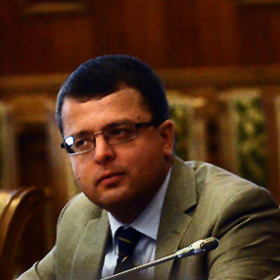
Transparent Regulation and Fair Play Rules are the Only Salvation for Ukraine’s Energy Sector
EWI Fellow Danila Bochkarev analyzes Ukraine's energy policies in light of recent reductions in energy consumption in the European Energy Review.
Economic and political turmoil in Ukraine has led to a significant reduction in energy consumption which should have eased the country’s key economic burden—its heavy dependence on dollar-priced hydrocarbon imports. In 2014 natural gas consumption alone went down by 16 % to 42.6 bcm, and imports fell by 8.3 bcm to 19.5 bcm. Falling demand and cheap crude also decreased Ukraine’s natural gas bill which went down from $12 billion in 2013 to $8.8 billion in 2014.
The country nevertheless continues to depend on energy imports—the energy import bill is indeed one of the most important internal economic and political challenges Ukraine faces. Almost all the proposed solutions have one common point: diversification and a shift away from dependence on Gazprom. However, these policy ideas still lack a realistic implementation plan and sound cost-benefit analysis: a fixation on import diversification has led to the neglect of domestic energy resources and a failure to promote energy saving.
So what is the solution?
Fixing Naftogaz’s deficit and improving the governance of this national champion must be the main priority of Ukraine's energy policy. The decrease of energy imports should have reduced the deficit of the national energy company Naftogaz. In reality, the deficit went up from $2 billion in 2013 to at least $7-$8 in 2014. Though non-payments and national currency devaluation have contributed to Naftogaz’s shortfall – they cannot explain the fourfold increase in the company’s deficit. Residential gas prices went up 50 % as of May 2014, industrial consumers continued to pay market-based tariffs, higher than the average price of imported gas - all this should have helped to alleviate Naftogaz’s deficit. Furthermore Naftogaz produces enough cheap gas to cover over 90% of Ukraine’s residential/heating demand. According to various media reports part of the deficit was linked to the mismanagement of production and gas flows. For example, in December 2014, Ukrainian national weekly ZN.UA published summary conclusions of the Audit Chamber of Ukraine. The report claimed that in 2011-14 period around 2 billion cubic meters per annum (bcma) produced by Ukrnafta—an upstream subsidiary of Naftogaz—were sold to private entities at the highly discounted price of $15 - $26/mcm, representing only a fraction of Ukraine’s industrial tariffs. Naftogaz was forced to source these volumes abroad paying in average $700 million per year. It is estimated that at least 3 bcm of gas produced by Naftogaz and its’ subsidiaries do not reach intended customers in residential/heating sector. Putting the house in order is therefore a clear “must”. Introduction of transparent governance is in the case is the only solution able to boost Naftogaz’s financial results and decrease its deficit.
Improvement of energy efficiency is also extremely important for Ukraine, which is in dire need of affordable energy supplies to re-launch its economic and industrial growth. According to the World Energy Council, the energy consumption of Ukraine's GDP reached 0.47 million British thermal units last year, almost four times higher than the average within the Organization for Economic Cooperation and Development. While some policy measures were implemented by the previous governments, introduction of energy-saving and energy-efficiency measures had been effectively blocked by lobbies of domestic energy intensive industries. In the last five years, the energy intensity of Ukraine's economy decreased only by 3.5 percent—a meager result even if compared with rather modest progress made even by its’ eastern neighbors. Energy saving is a low hanging fruit in Ukraine—it is cheap and will bring immediate results. Ukraine's energy-saving potential could reach as much as 40 - 50 percent of its current energy consumption.
Ukraine’s 'independents' is an important source of natural gas which should not be underestimated. In June-November 2014 period, Ukraine’s gas production rose by 2.1% year on year to 18.1 Bcm. This was mostly due to the performance of independent companies, whose output rose by 26.7% to 2.67 Bcm; conversely, Naftogaz’ production fell by 1% to 15.43 bcm. Independents’ output could reach 5.7 bcm by 2017 under a favorable investment-friendly tax regime.
Ukrainian government chose a different path, sharply increasing gas taxation for private producers in December 2014. The new fiscal regime clearly favours the license–holder of the large fields (e.g. Naftogaz) over smaller private enterprises and risks to undermine both the growth of independents and liberalization of Ukraine’s gas market.
These examples show that the energy reform in Ukraine stalls due to the lack of real reforms and some of the government’s actions even against the spirit of the Energy Community and liberalized energy market. While the Ukrainian leadership took some steps which shows its commitment to reforms—e.g. adoption of Third Energy Package compliant gas market law (Law N. 2250), thus breaking Naftogaz’s monopoly—Kiev has still a long way to go. However these steps should be coherent with a general fiscal and energy policy. New laws should also be working in practice and not only on paper. Increasing transparency, strengthening institutions and reducing the complexity of the legal system should be given high priority. It is up to Kiev to fully play by the European rules and not just applying them selectively.
--
To read the article at the European Energy Review, click here.

